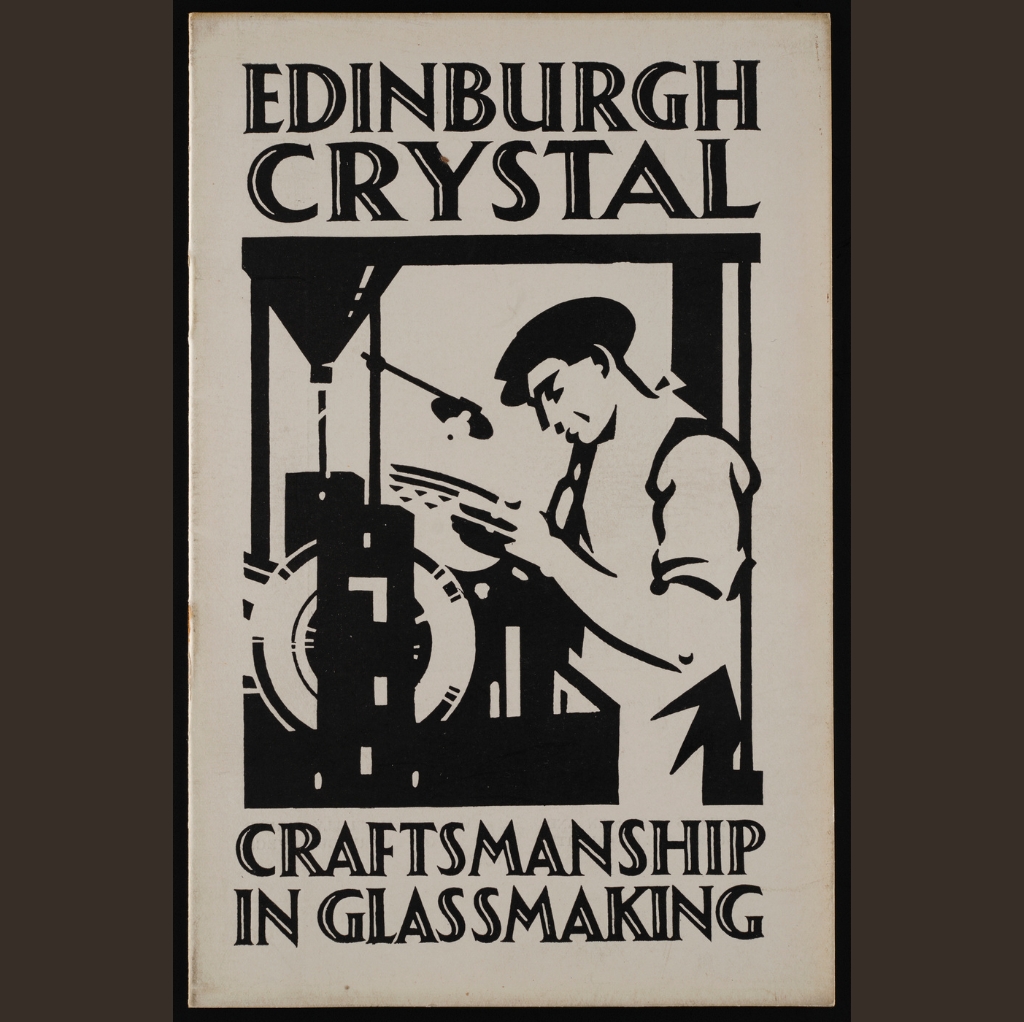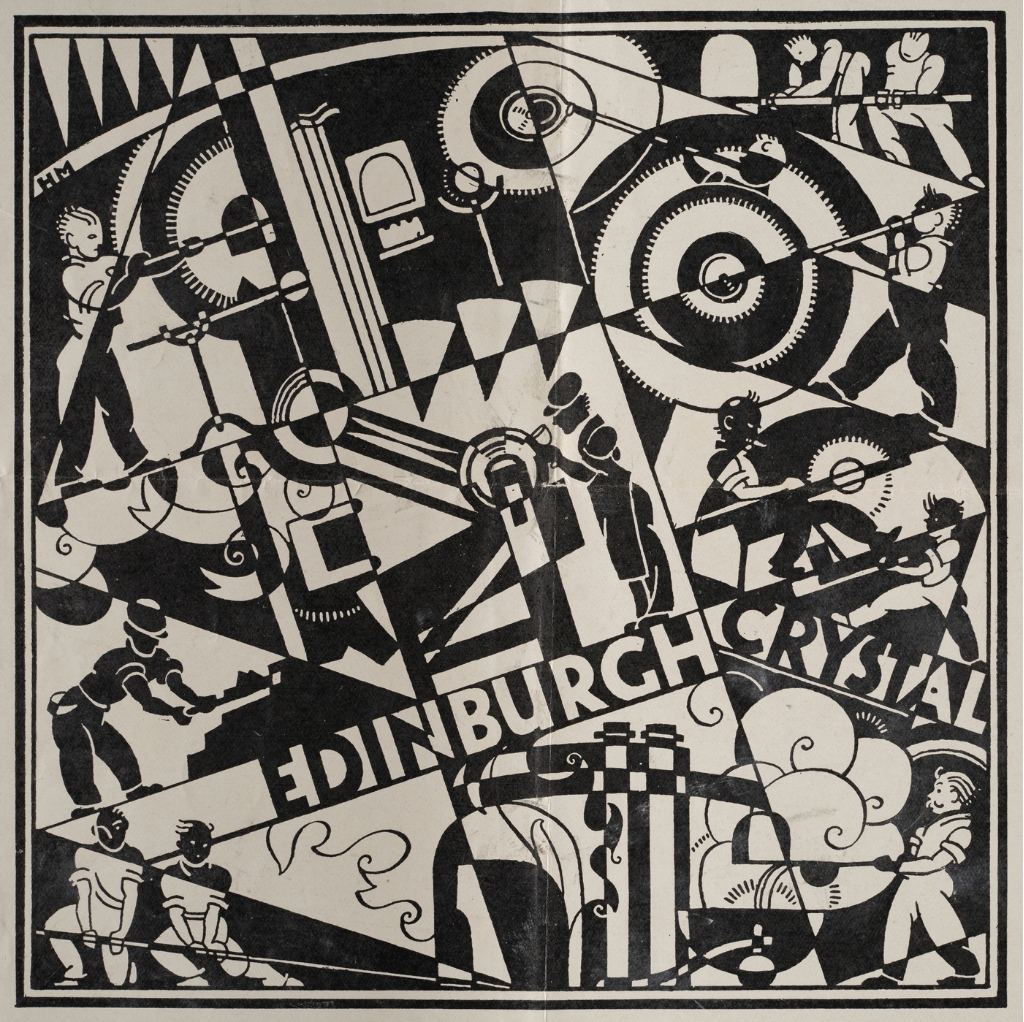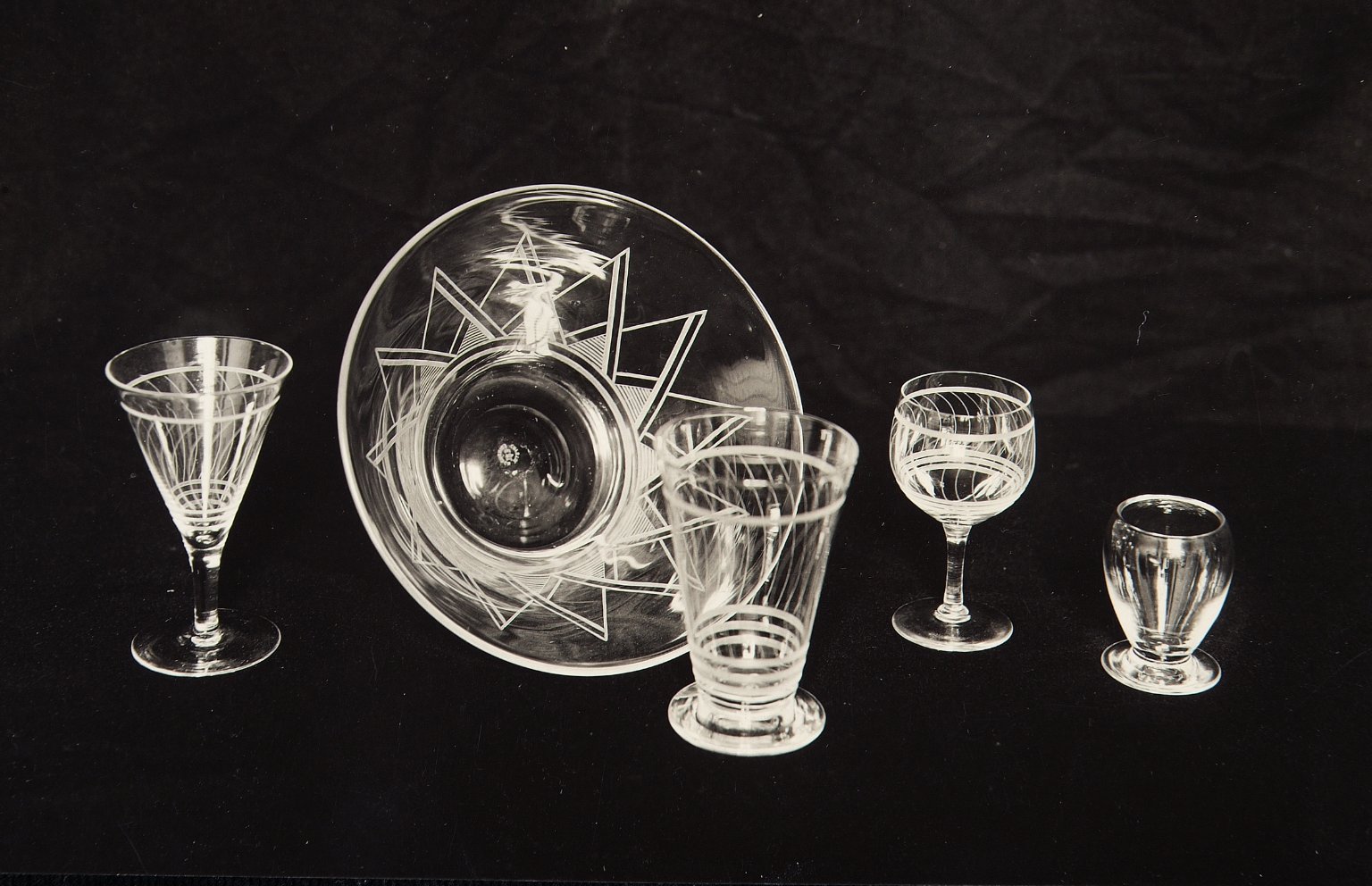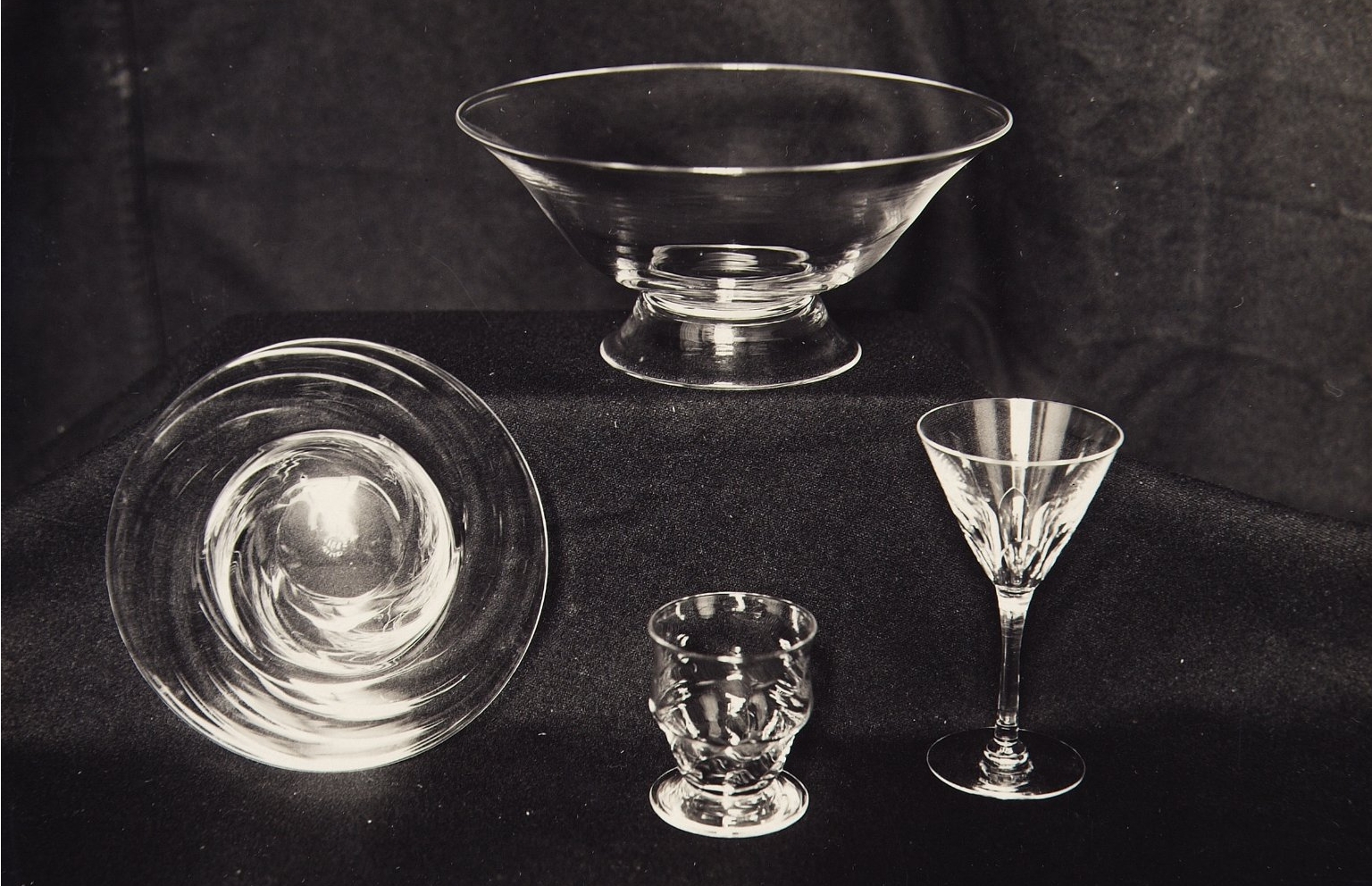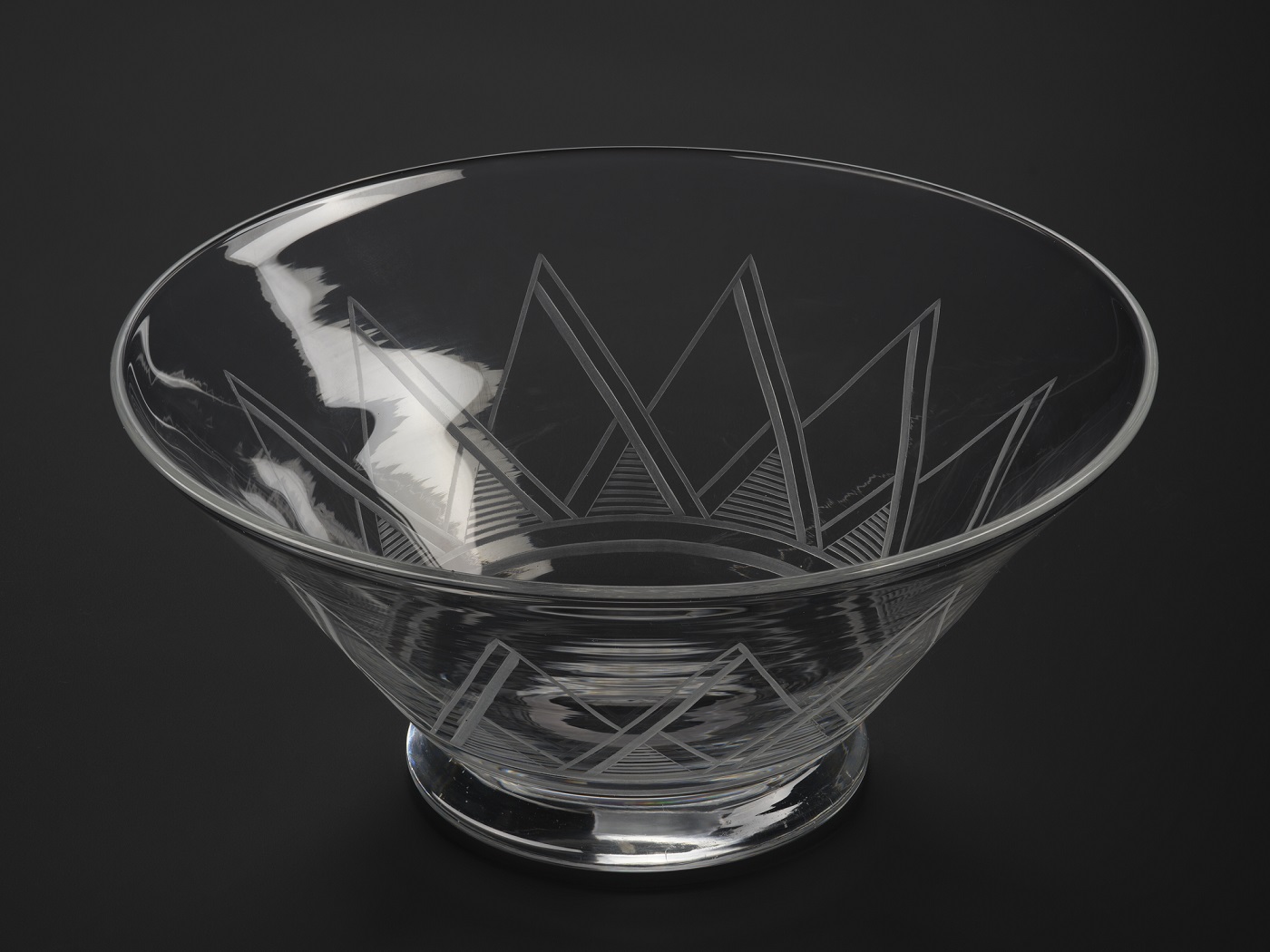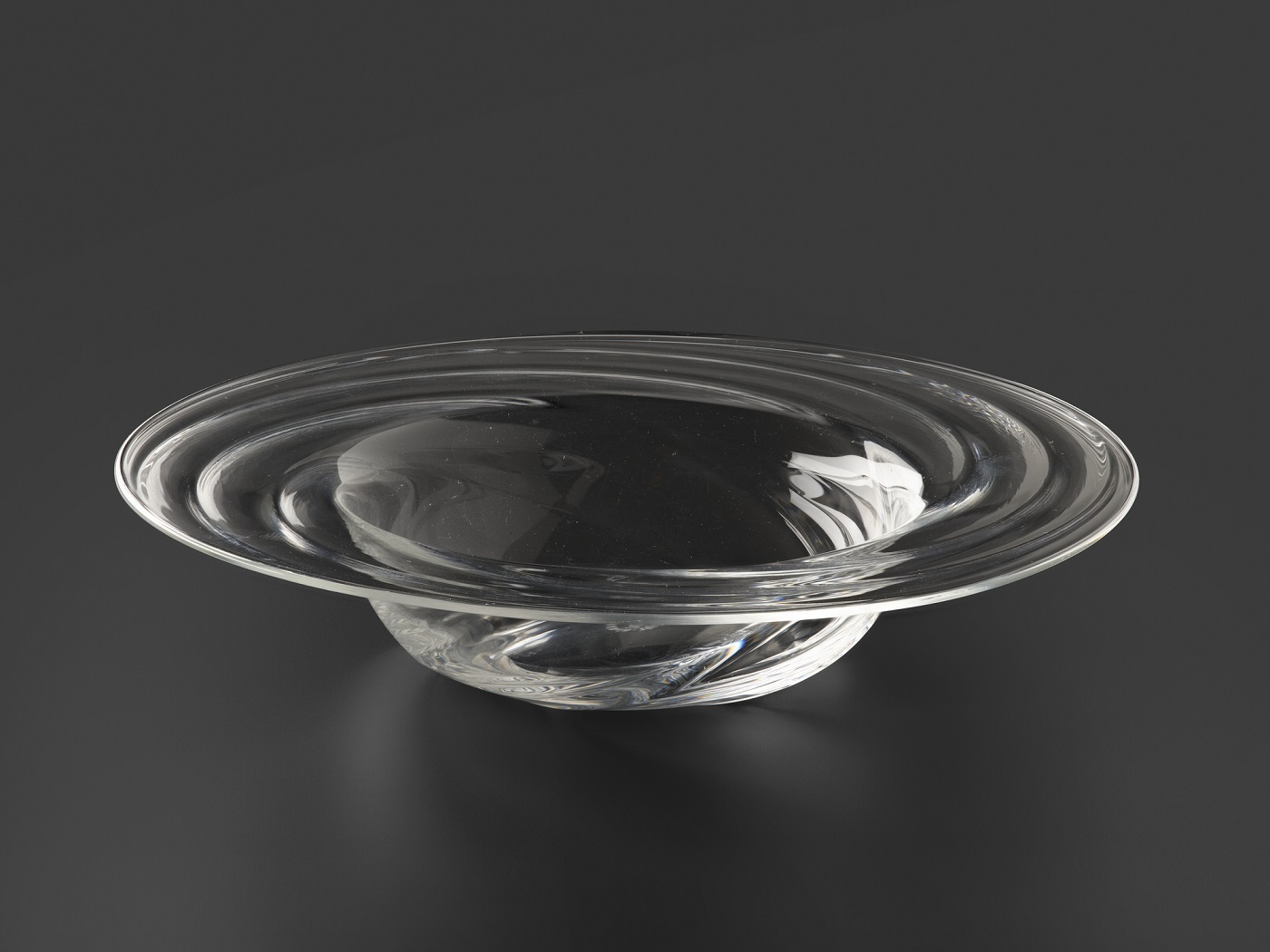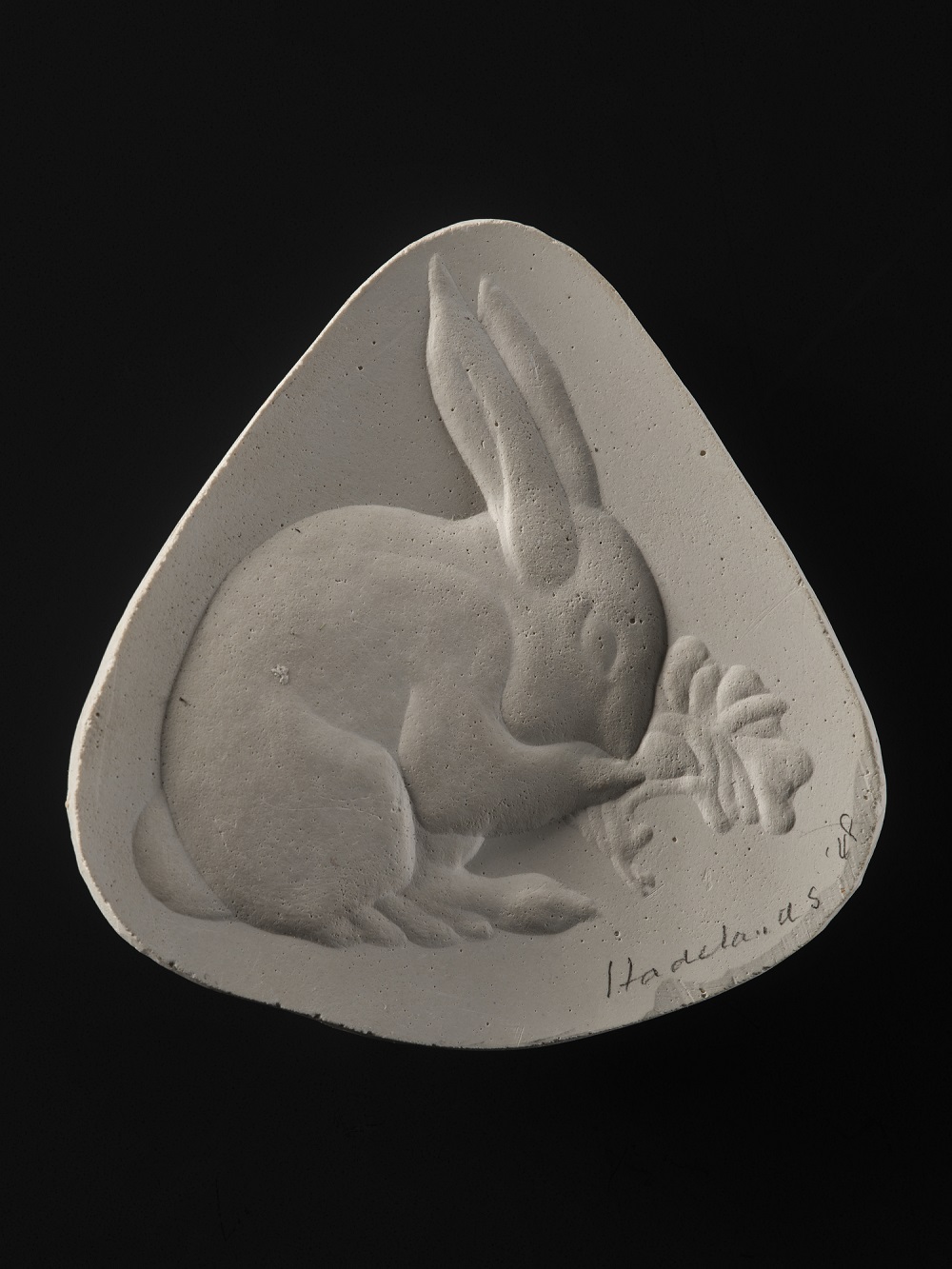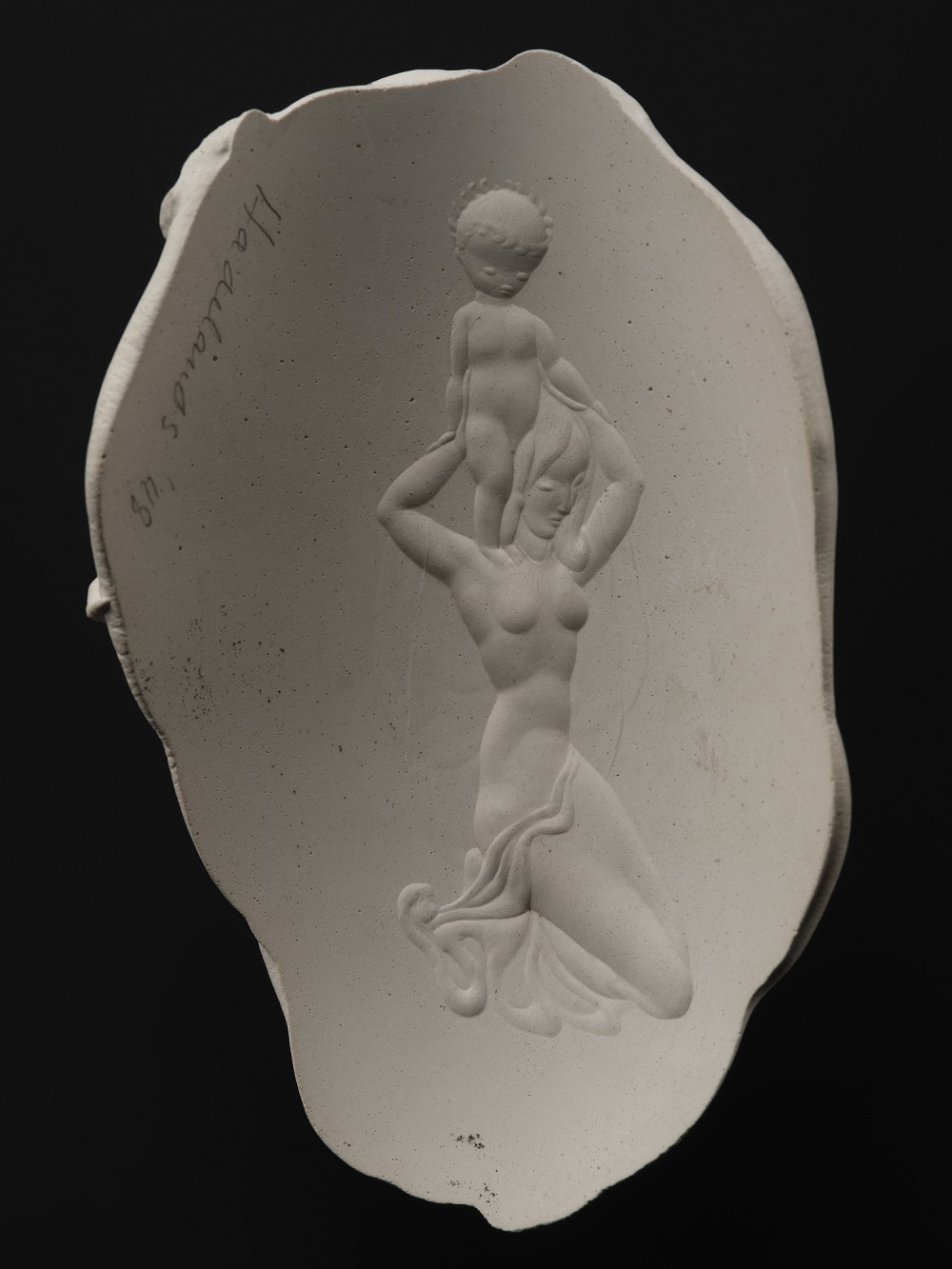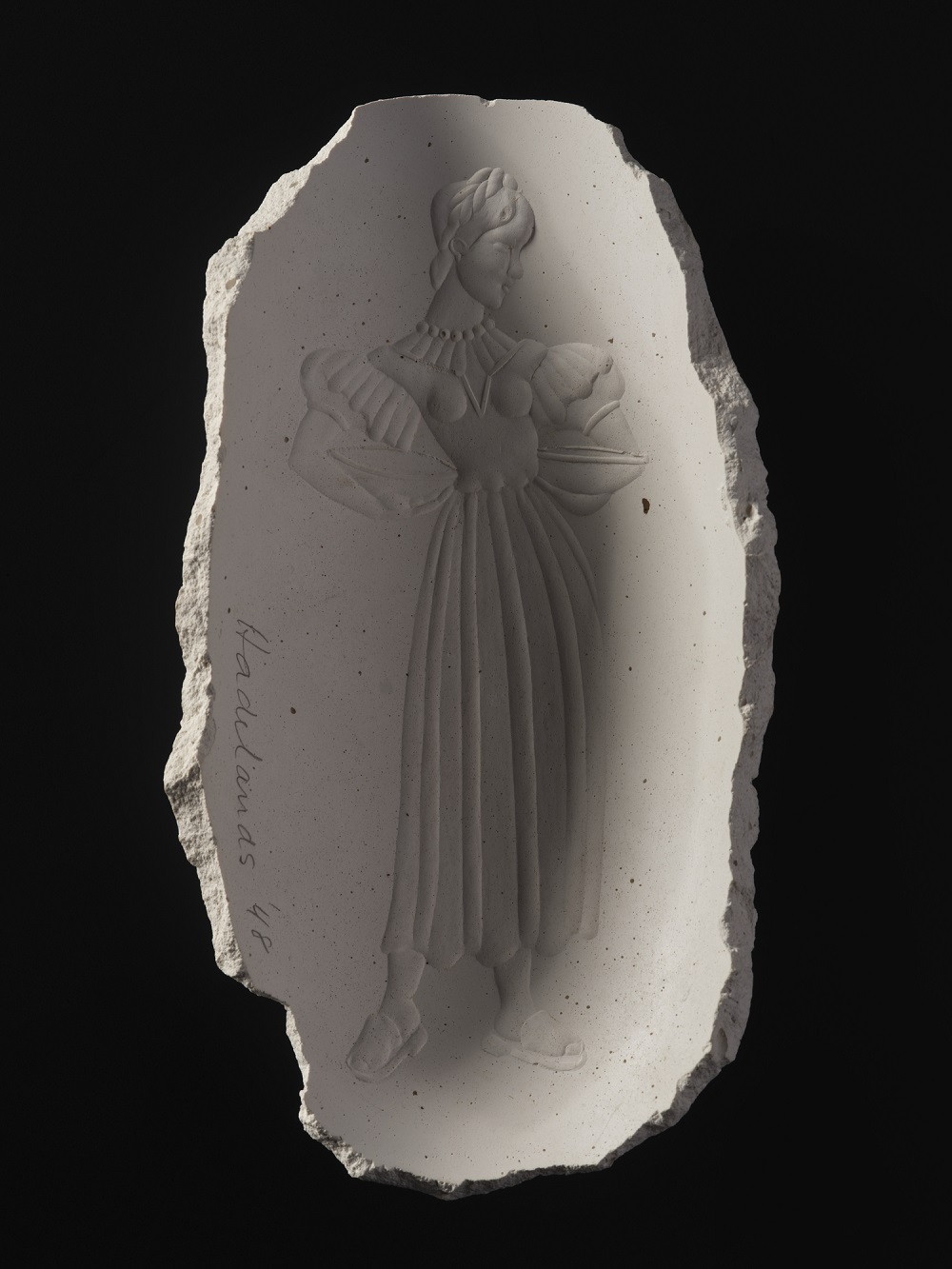Helen Monro Turner (1901 – 1977) was a hugely influential Scottish glass engraver, designer, educator, and illustrator, as well as a highly respected role model for women pursuing careers as glass artists, designers, and makers. Her prominence in 20th century British glass made important inroads in a field which, until the not-too-distant past, was dominated by men and misogynistic attitudes. Sarah Rothwell, Senior Curator of Modern & Contemporary Design, introduces this remarkable Scottish pioneer whose work is held within our collections.
As it is International Women’s Day and Women’s History Month I thought it would be the perfect opportunity to celebrate the remarkable achievements of Helen Monro Turner. Turner, for those unaware of her name, is best remembered in Edinburgh for her illustrations for the publisher Thomas Nelson and Son’s education and recreational books for children. Her numerous public architectural commissions can be seen in the city, such as the windows on the staircase in the National Library of Scotland. And for establishing the Department of Glass Design at Edinburgh College of Art in 1943, nurturing some of the leading names in glass such as the father of the British Studio Movement Sam Herman, and acclaimed Scottish glass artist Alison Kinnaird.
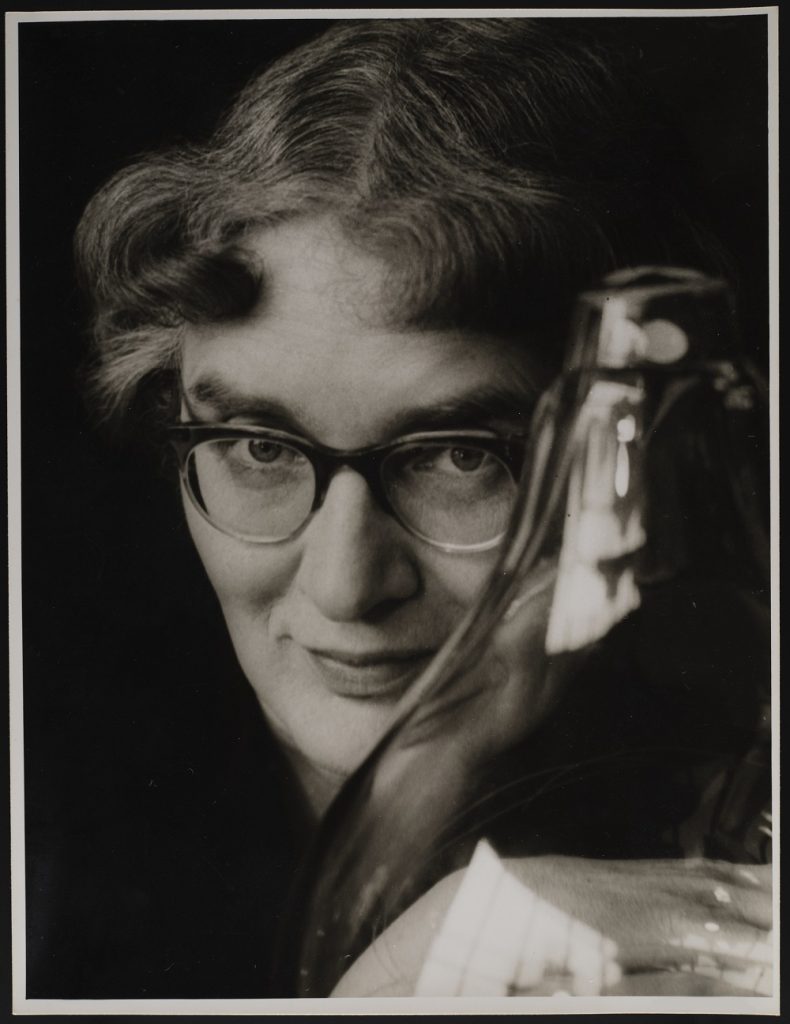
A prolific artist and designer, Helen Monro Turner wasn’t actually trained in glass design. She trained in Art at the University of Edinburgh whilst also gaining a Diploma in Design and Crafts at Edinburgh College of Art. She graduated in 1926 with a specialism in woodcut design and illustration. She only fell in love with the medium of glass after spending time sketching workers at the Edinburgh and Leith Glassworks in the late 1920s for a potential commission.
Initially, she submitted designs to the company for consideration. These were unfortunately not always met with enthusiasm by the men of the Edinburgh and Leith Glassworks design department, who are recorded as stating that her designs “…cannot be done [as] it has never been done before . . . this is too new, too unfamiliar. It will not sell.” Despite being understandably frustrated by their comments, this didn’t put her off. Soon the company did recognise her “considerable promise,” and her designs were notably exhibited at the 1935 British Art in Industry Exhibition at the Royal Academy in London.
Two designs believed to have been exhibited at Burlington House have recently been donated to our collections. The one with its optic twist is quite traditional, so was probably met with approval from the austere men of the E&L design room. The other, with its bold graphic zigzag, speaks of the continuing influence of the Style Moderne, which can also be seen in the illustrations she was commissioned to create by the company.
What is quite remarkable for a time when there were few women employed in the glass industry is that Turner was not content with just being a passive designer providing instruction for another to realise her work, who then may have been expected to leave when she married. Turner wanted to engage directly with her medium of choice – glass, to gain an intuitive knowledge of its potential and possibilities. Understanding, as she stated, that “the best teacher of glass design is glass itself, and the best training is that which brings the student into closest actual contact with the medium, and into an inquisitive awareness of its latent possibilities.”
On that basis, she applied to Edinburgh College of Art for an Andrew Grant Fellowship to study glass engraving, cutting, and etching at the Kunstgewerbeschule in Stuttgart, which she was successfully awarded in 1938. Unfortunately, her studies were cut short by the declaration of war. However, the knowledge and contacts she gained in the glass industry allowed her to set up her own studio in Edinburgh. This brought in more commissions from both private and commercial ventures and her studio soon gained a reputation both at home and abroad.
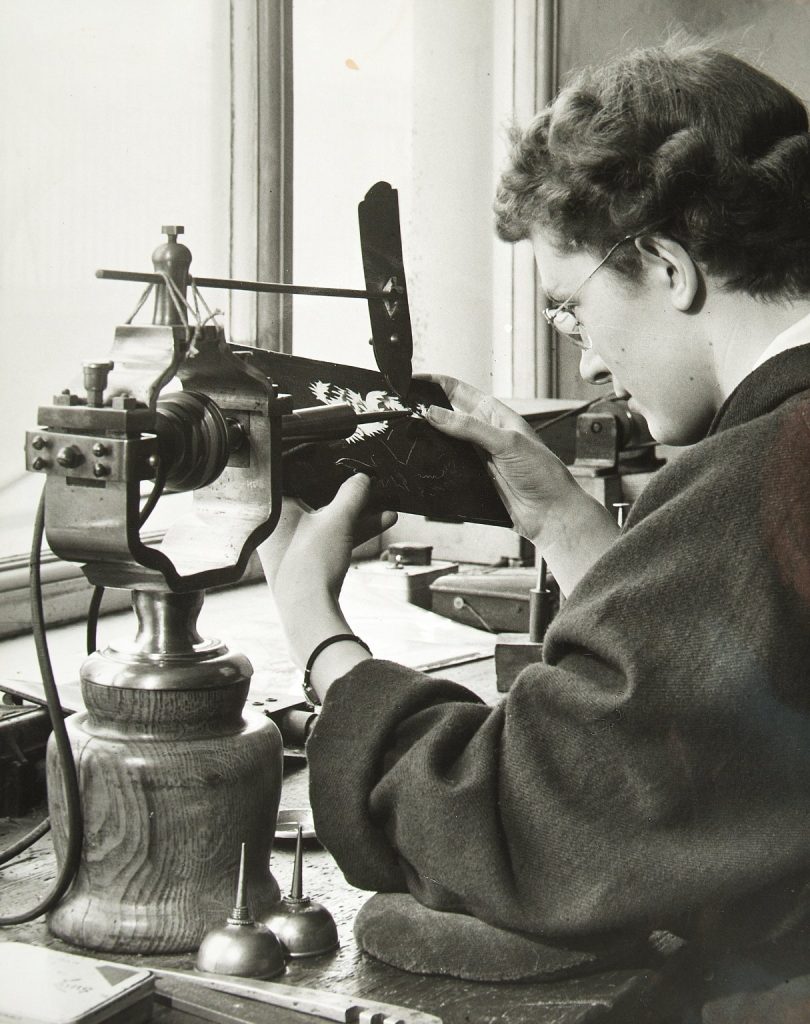
One such notable employment was with Hadeland Glass in Norway, where she would make annual visits between 1947 and 1951 to instruct trainee engravers, develop designs for manufacture, and assist in the reconstruction of the Norwegian glass industry which had been virtually destroyed during the war.
One of Turner’s big passions, despite being naturally shy, was education. Brian Blench, former Keeper of Decorative Art at Kelvingrove Art Gallery and Museum who has written a number of articles on Turner, once said of her that “Artists have frequently been forced into the role of teacher in order to make a living in order to pursue their artistic activities. Few, however, have been so driven with a desire to interest, encourage and develop a love of their chosen medium as Helen Monro Turner.”
Initially asked to establish a department of glass engraving at Edinburgh College of Art in 1940, she started off with just four students and two lathes. However, her vision for the department was that it should not be limited to just the one aspect of the art of glass in which she specialised, but should cover all aspects of glass design and making. Soon she added lampworking, then sand-blasting, cutting wheels, and, finally, a furnace and a glass-blower to assist her. She also believed that all students, regardless of gender, should have the opportunity to work directly with glass in all capacities.
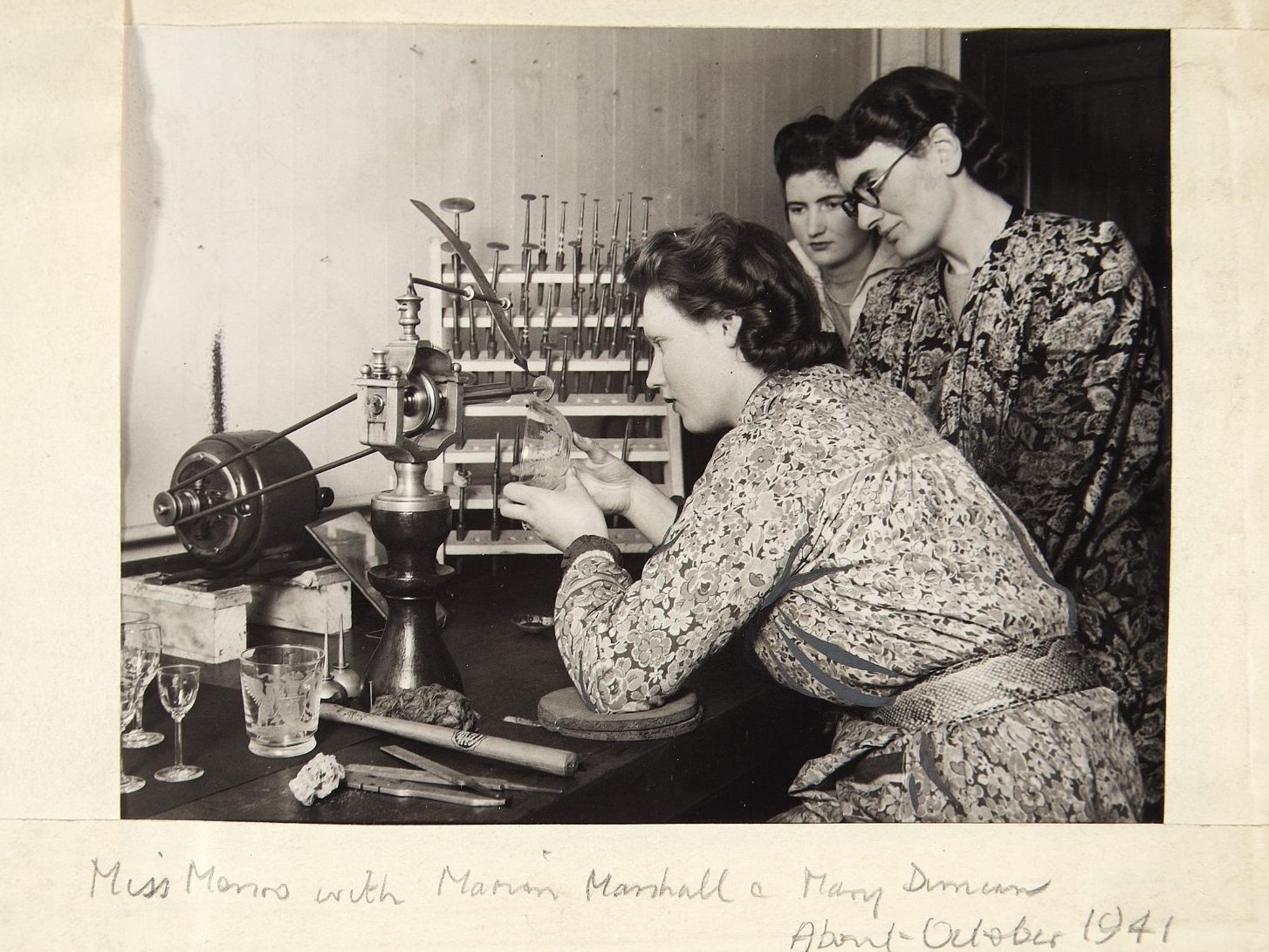
The result was not only that was she the first woman to be head of a glass department in the UK, but through her tenacity and foresight she was able to establish one of the best-equipped and influential educational departments in this field. From this impressive achievement came a stream of glass artists who transformed not only the glass industry in post-war Scotland but also had a significant impact on the British studio glass movement.
Her influence didn’t stop there. In 1956 she established the Juniper Green Workshop, creating a space in which a number of her ex-students were able to continue to develop their oeuvre during a period when post-graduate training wasn’t an option in glass. She also helped platform them by facilitating exhibition opportunities both in the UK and America, as well as commissions from royalty, public institutions, and private individuals. It was here, on the outskirts of Edinburgh, that she created some of her most monumental architectural commissions for churches, libraries, airports, universities and social clubs across the country.
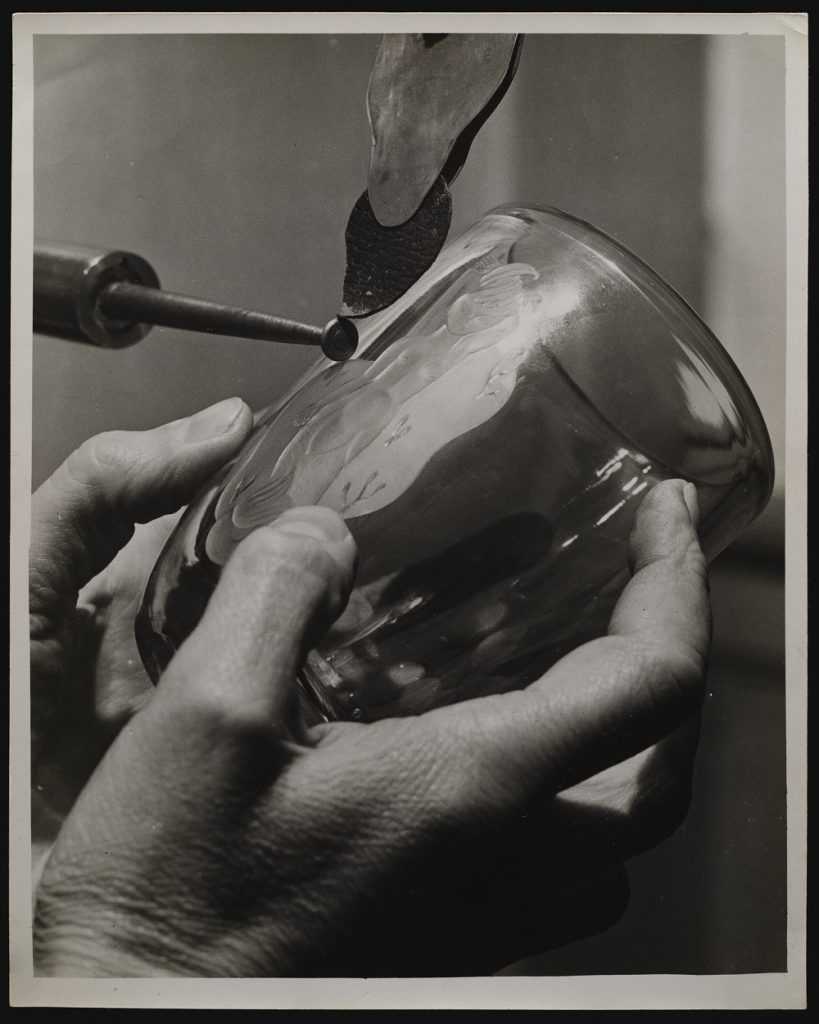
Helen Monro Turner may have been somewhat forgotten amongst the names of influential 20th century British glass artists and designers, where designers such as Geoffrey Baxter and Keith Murry are predominant. Even in terms of her specialism of etching, she has been overshadowed somewhat by the celebrity of John Hutton. Though, unlike her peers, there may be no monographs on her influence, I think she was truly a remarkable woman who should be celebrated and recognised for her work. Also for how, conscious of the times she lived in, she sought out recognition for herself and her students on an international male-dominated platform. Any discussion of her legacy would be incomplete without recognising how she created opportunities for those who excelled in and had a passion for glass, regardless of gender.
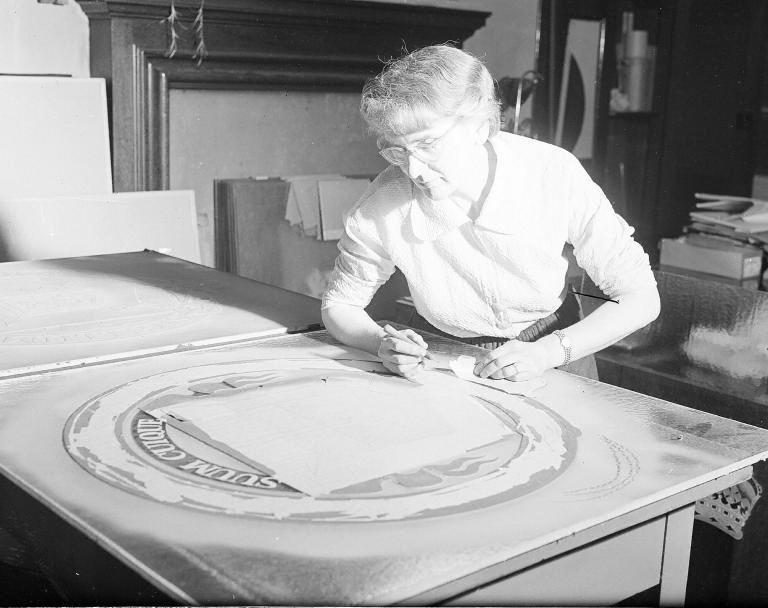
Turner’s dedication to the medium which she loved so much even extended to her wearing a glass fibre dress on her wedding day. When she married Professor William E. S. Turner, a British chemist, pioneer of scientific glass technology, founder of the Turner Museum of Glass at Sheffield University, and one of Helen’s biggest professional supporters. I can’t even imagine how itchy that must have been!
A fitting tribute to Turner’s legacy in glass education is that despite so many craft courses being cut from modern higher education, teaching in glass carries on to this day through the students and staff of Edinburgh College of Art’s glass department.
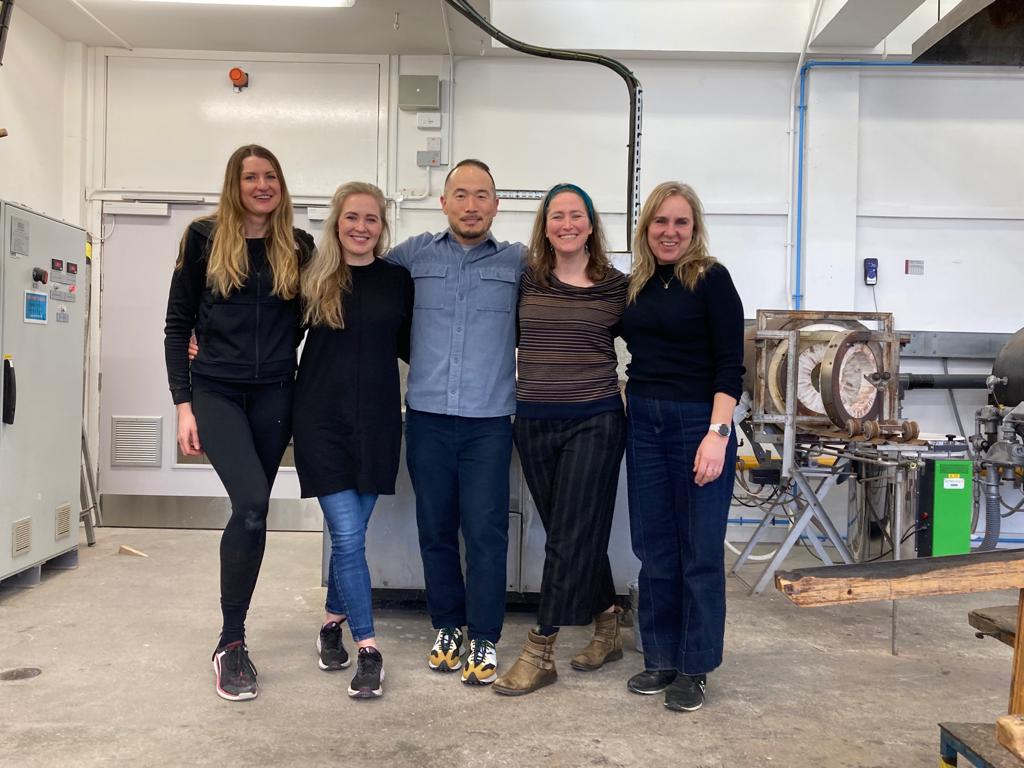
For further reading on the remarkable Helen Monro Turner, I recommend checking out Brian Blench’s article for the Journal of the Decorative Arts Society, No.13, Impassioned Vision – Helen Turner and the teaching of glass design, and Jill Turnbull’s article Helen Monro Turner – An Artist in Industry that featured in The Journal of The Glass Association, Vol. 8.

